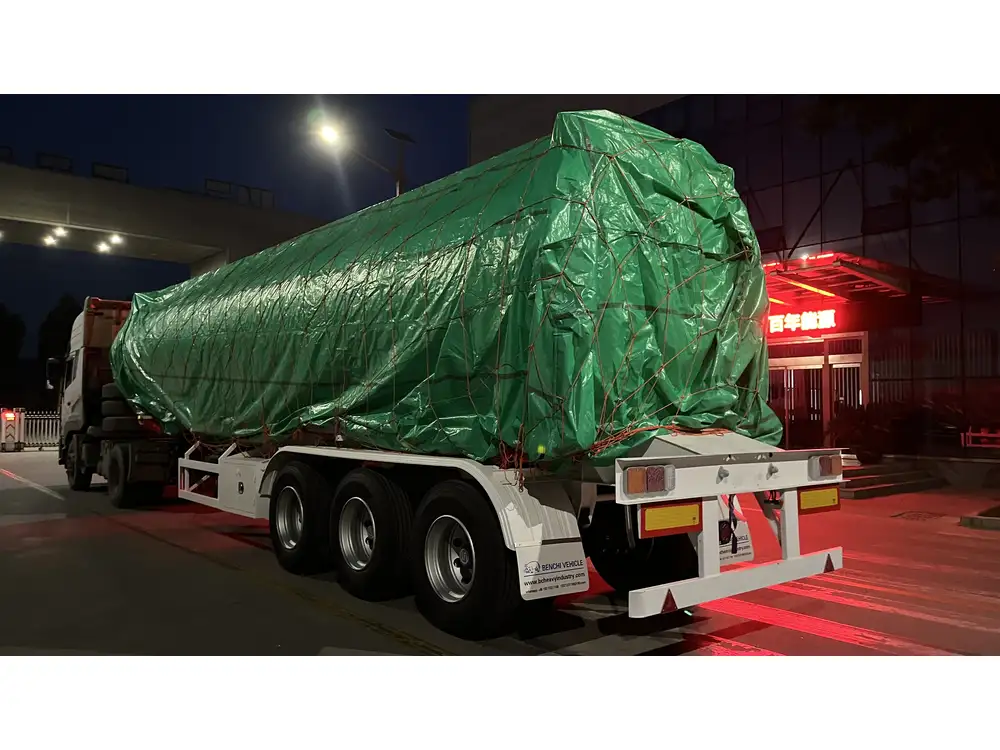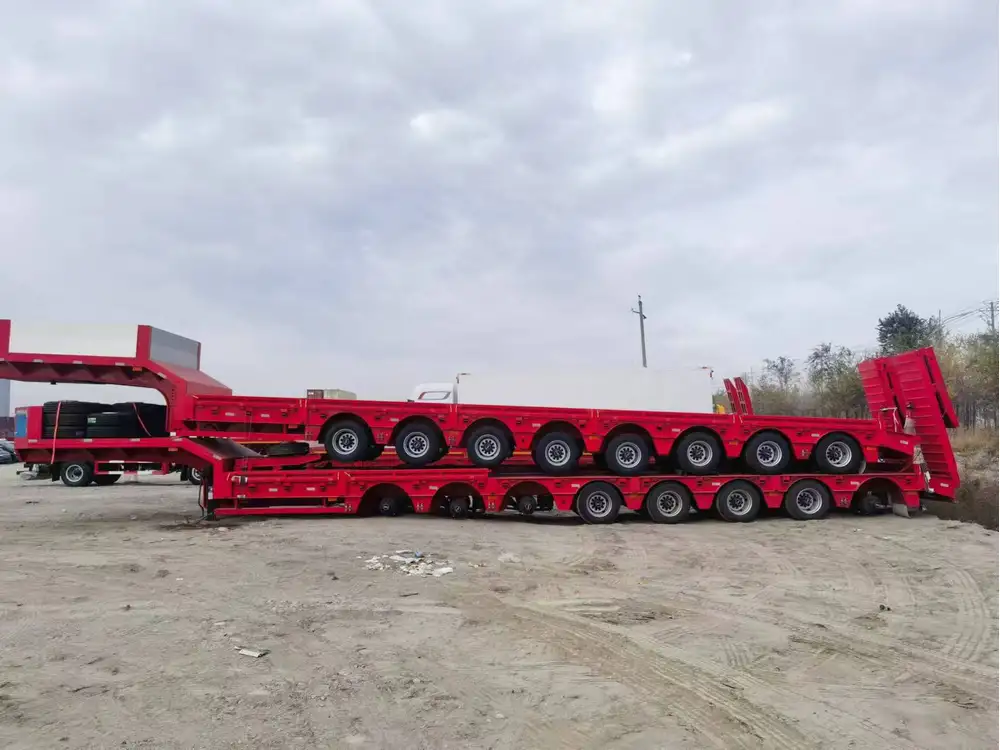Pulling a semi-trailer with a pickup truck is an endeavor filled with challenges and opportunities. While pickup trucks are not typically designed to tow large trailers, advancements in towing technology and design improvements in modern trucks have made it feasible under the right conditions. This guide delves into the intricacies of towing a semi-trailer, examining everything from equipment and techniques to safety considerations and regulatory compliance.
Understanding Your Pickup Truck’s Towing Capacity
Before embarking on this journey, a critical first step is to assess your pickup truck’s towing capacity. This number varies significantly depending on the make, model, and year of your vehicle. Here’s how to determine your truck’s capacity:
| Metric | Description |
|---|---|
| GVWR | Gross Vehicle Weight Rating — the maximum weight the truck can safely carry, including its own weight and any cargo. |
| GCWR | Gross Combination Weight Rating — the combined maximum weight of the truck and the trailer. |
| Towing Capacity | The maximum weight your pickup truck can tow without risking damage to the vehicle or compromising safety. |
Steps to Determine Towing Capacity
- Consult the Owner’s Manual: It typically contains specifications for GVWR, GCWR, and towing capacity.
- Check Vehicle Stickers: Look for a sticker inside the driver’s side door jamb, which often lists relevant weights and capacities.
- Utilize Online Resources: Manufacturer websites and auto forums provide valuable insights and tools for calculating towing capacity based on your truck’s specifics.

Choosing the Right Equipment
Successfully towing a semi-trailer requires more than just a truck; it demands the right equipment to ensure safety and compliance.
Tow Hitch and Connections
- Type of Hitch: A heavy-duty fifth-wheel hitch is generally recommended for pulling a semi-trailer due to its stability and weight distribution.
- Weight Distribution Hitch: This can help to evenly distribute the weight of the trailer across the axles of both the trailer and the tow vehicle, which is crucial for handling heavy loads.
Safety Chains and Electrical Connections
- Safety Chains: These should be rated for the weight of the trailer and crossed under the tongue of the trailer to provide an emergency connection.
- Electrical Connections: Ensure you have the right wiring harness for brake lights, turn signals, and trailer brakes, along with a suitable brake controller.

Preparing for the Journey
Preparation is key. Here’s how to set yourself up for success when pulling a semi-trailer.
Load Distribution and Securing the Load
A well-distributed load is essential for safety and control.
| Load Division | Description |
|---|---|
| Front to Rear | Ideally, 60% of the weight should be towards the front of the trailer. |
| Side to Side | Balance the weight evenly on both sides to prevent swaying. |
| Securing the Load | Use appropriate tie-downs and straps to prevent load movement. |
Vehicle Maintenance
Check critical components to ensure readiness:
- Tires: Inspect tread depth and air pressure.
- Brakes: Ensure both truck and trailer brakes are functional and appropriately adjusted.
- Fluids: Check engine oil, transmission fluid, and brake fluid levels.

Mastering the Art of Towing
Pulling a semi-trailer requires more skill than merely attaching it to your pickup truck.
Driving Techniques
- Start Slow: Begin with gentle acceleration to avoid wheel slip.
- Maintain Distance: Increase following distance compared to regular driving, typically about twice the normal distance.
- Sharp Turns: Be cautious on sharp turns as the trailer may pivot sharply, affecting vehicle stability.
Handling Braking
Towing a heavier load significantly changes how your truck brakes, which is critical for safety:
- Use Engine Braking: Downshift to reduce speed without relying solely on brakes.
- Maintain Brake Discipline: Avoid sudden stops. Gradual deceleration minimizes trailer sway.

Safety Considerations
Safety should always be your top priority. Adhering to legal regulations and following best practices can prevent disasters.
Local Regulations and Weights
Ensure compliance with local laws regarding:
- Weight Limits: Different regions may have restrictions on how much weight can be towed.
- Size Restrictions: Check road width limitations, especially for semi-trailers, which may be subject to specific regulations.
Emergency Procedures
Preparation for Unexpected Events: Anticipate emergencies by installing safety gear, such as:
| Emergency Item | Purpose |
|---|---|
| Fire Extinguisher | Essential for controlling fire hazards associated with trailers. |
| First Aid Kit | For minor injuries that may arise during transport. |
| Tow Straps | Useful for pulling a disabled vehicle off the road. |

Understanding Towing Technology
Modern pickup trucks are equipped with advanced technology designed to make towing easier and safer.
Towing Assistance Features
- Adaptive Cruise Control: Maintains a safe distance from other vehicles as you tow.
- Trailer Sway Control: Helps stabilize the trailer in windy conditions or during sudden maneuvers.
- 360-Degree Cameras: Provide visibility around the truck and trailer for improved maneuvering in tight spots.
Brake Controllers
Integrating a quality brake controller ensures that your truck and trailer braking systems work in harmony. Here are common types:
| Type | Description |
|---|---|
| Time-Delayed | Activates brakes on the trailer based on the set time delay. |
| Inertia-Based | Applies brakes depending on the truck’s stopping force. |
| Proportional | Adjusts braking power based on the speed of both the truck and trailer. |

Common Challenges and Solutions
Towing can bring unique challenges. Here’s a breakdown of potential issues and how to overcome them.
Swaying Trailers
Causes
- Improper load distribution
- High winds
- Sudden movements

Solutions
- Install a Weight Distribution Hitch: Helps manage the weight more evenly across the truck and trailer.
- Slow Down: Reducing speed can help regain control and minimize sway.
Engine Overheating
Causes
- Heavy loads
- Poor maintenance

Solutions
- Avoid Overloading: Regularly check your loading practices and adhere to limits.
- Monitor Engine Temperature: Keep an eye on gauges. If it starts climbing unexpectedly, pull over and allow it to cool.
Conclusion: The Road Ahead
Towing a semi-trailer with a pickup truck is a formidable task that requires meticulous planning, the right equipment, and adherence to safety protocols. With the knowledge gained from this guide, you are better prepared to tackle the complexities of this demanding venture.
Towing responsibly contributes to a safer driving experience, ensuring not only your safety but also that of others on the road. Careful preparation and respectful driving can transform the challenge of hauling a semi-trailer into a rewarding endeavor.
Whether you’re moving, working in logistics, or just experimenting with your vehicle’s capabilities, mastering the skills of towing will serve you well in any situation that demands it. With knowledge, practice, and a safety-first approach, the possibilities are limitless. Safe travels!



